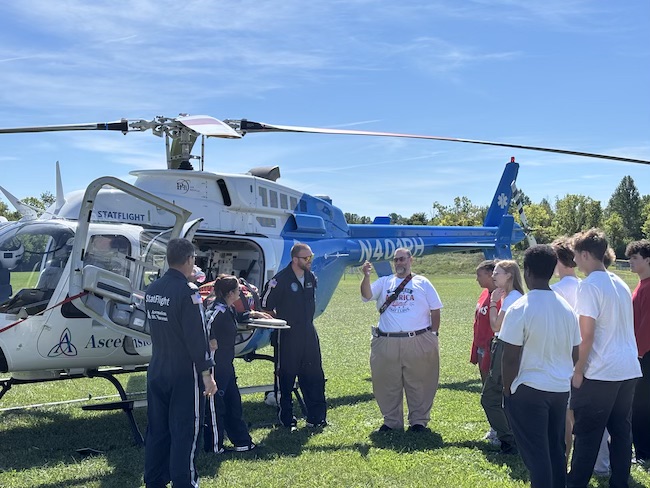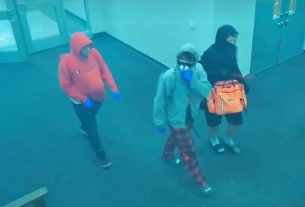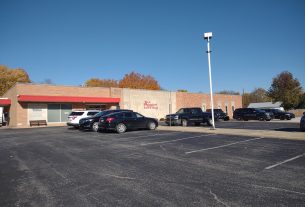
By Nathan Morris / Staff writer and JT Koch / Spill editor
Several weeks ago students heard a weird whirring sound outside of the building. It was a bit loud and a bit distracting, but it was here for good reason.
That sound was a helicopter from Ascension St. Vincent. In case of a medical emergency requiring a patient to get rapid transport to a hospital, St. Vincent can have a helicopter ready and on their way in a matter of minutes. On Aug. 25 and 29, the students taking the EMT class had a great opportunity to see one of these helicopters up close, and talk to the pilot and flight-registered nurses.
This all happened thanks to the experience of the class’s teacher Jeremy Godsey. With his experience as a paramedic, his connections allowed him to organize the arrival of this helicopter.
“I just know these guys. I’ve worked with them for several years, know the base managers, so I just called them up and said, ‘Hey, you care if we get a helicopter to come out and teach our EMT students?’” Godsey said.
The class got to meet with two flight RNs. The nurses taught the students about the helicopter and how they handle the patients they take, along with teaching them about some of the equipment the helicopter carries.
“The team was great at explaining everything and really helped us understand everything that goes into their job. They allowed us to practice loading onto the helicopter and explained how they do things in the field,” senior Cadyn Brown, an EMT class student, said.
Students also had the opportunity to learn about flying a medical helicopter from the pilot Kevin Palomino. He shared his insight with his part of the job.
“If you land in a cornfield, a soybean field. small roads that you drive in. We have that accessibility. That’s a fun part of this. Sometimes you fly, sometimes you don’t, but the times we do. We don’t know where we’re going. We’re just going to a point in space. Once we get there, we’ll figure it out,” Palomino said.
With the EMT program arriving at NPHS only last year, the program is growing with a lot of support. With this support, Godsey has more plans to provide his students with education.
“We are going to go to a cadaver lab. I’m going to get that set up probably for late October, and that will get them to go in and actually see a human body where they can cut the body open and show us different parts of the body, and it gives them the opportunity to put, airways in on a human being. That may not be able to happen normally if they’re not with the fire department or anything like that. So I’ve got a lot of really cool stuff planned,” Godsey said.
Because the medical industry is busy dealing with real patients they don’t have time to teach students the skills they will need. With Godsey planning these events, the students can learn about emergency medical response without interfering with real medical work.
“You really don’t see the hospitals. They can’t. They’re too busy dealing with the patients. We’re kind of a liaison between the hospitals and the patients and everything in between. I’m sure, you know, the hospitals give seminars and things like that. This is our kind of seminar reaching out to the communities. Kind of gives you a warm and fuzzy feeling,” Palomino said.


